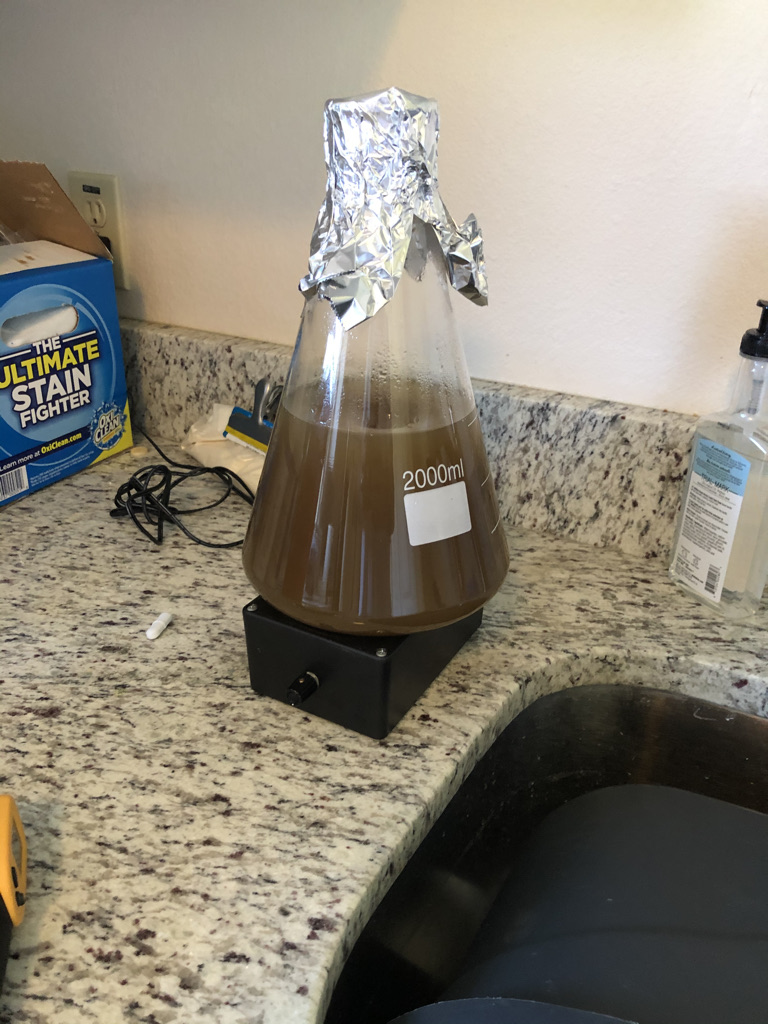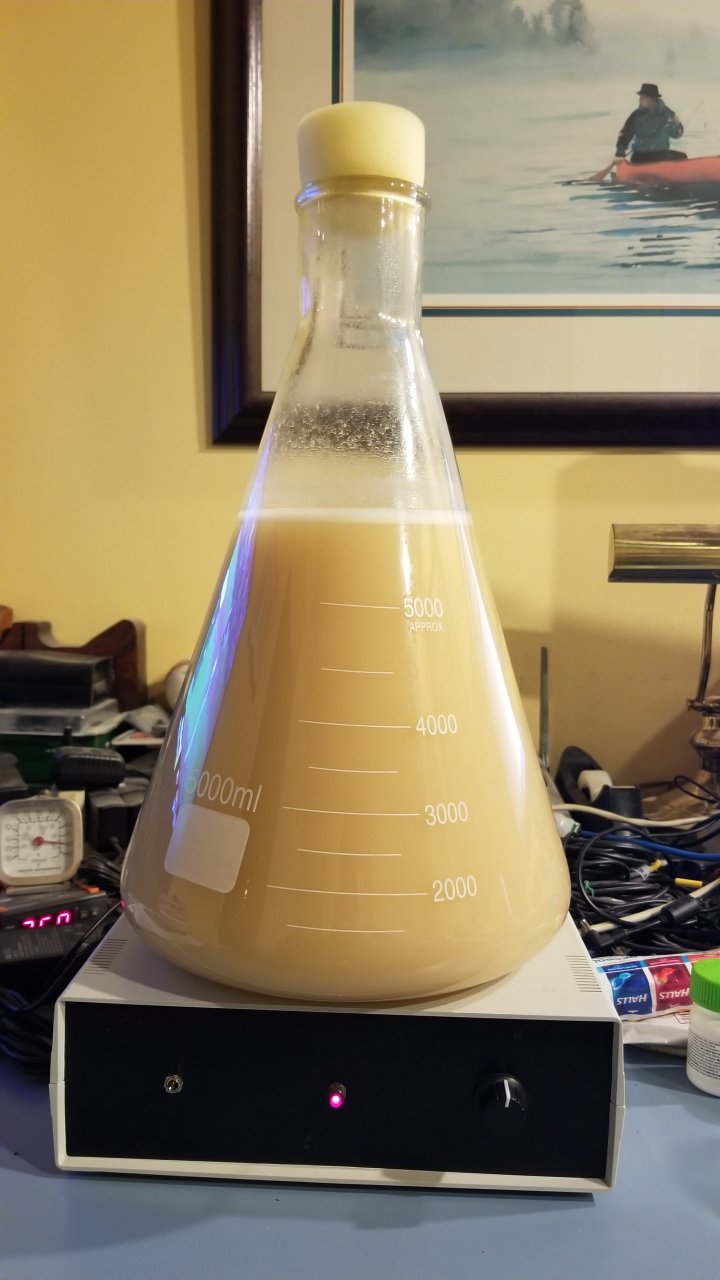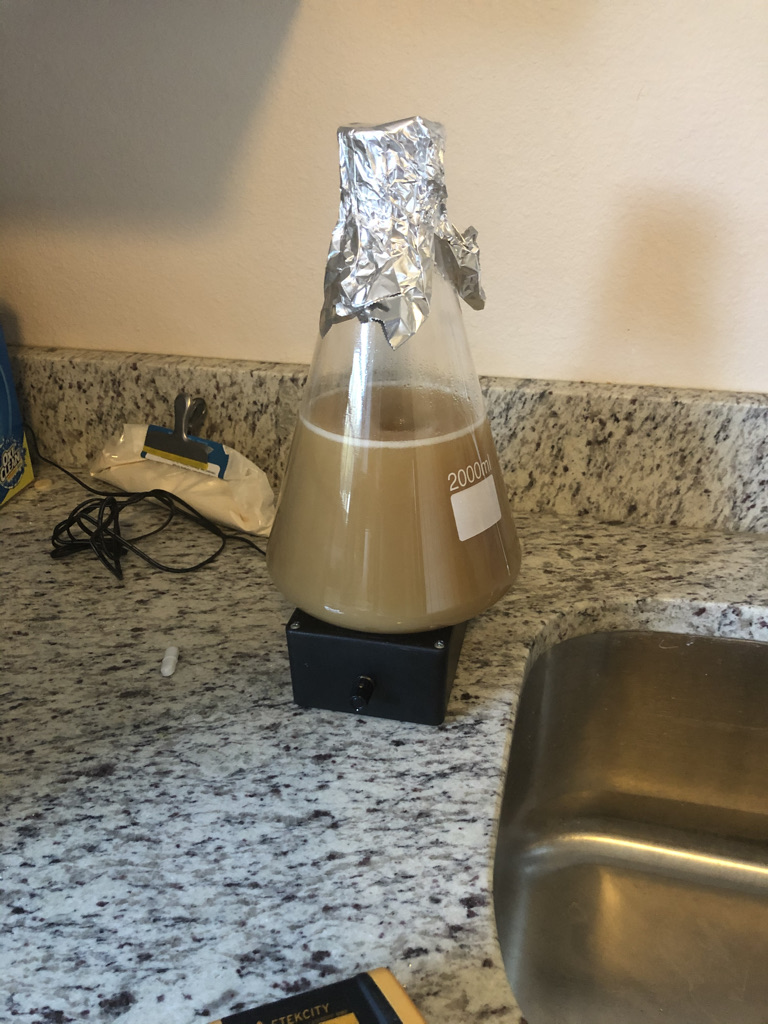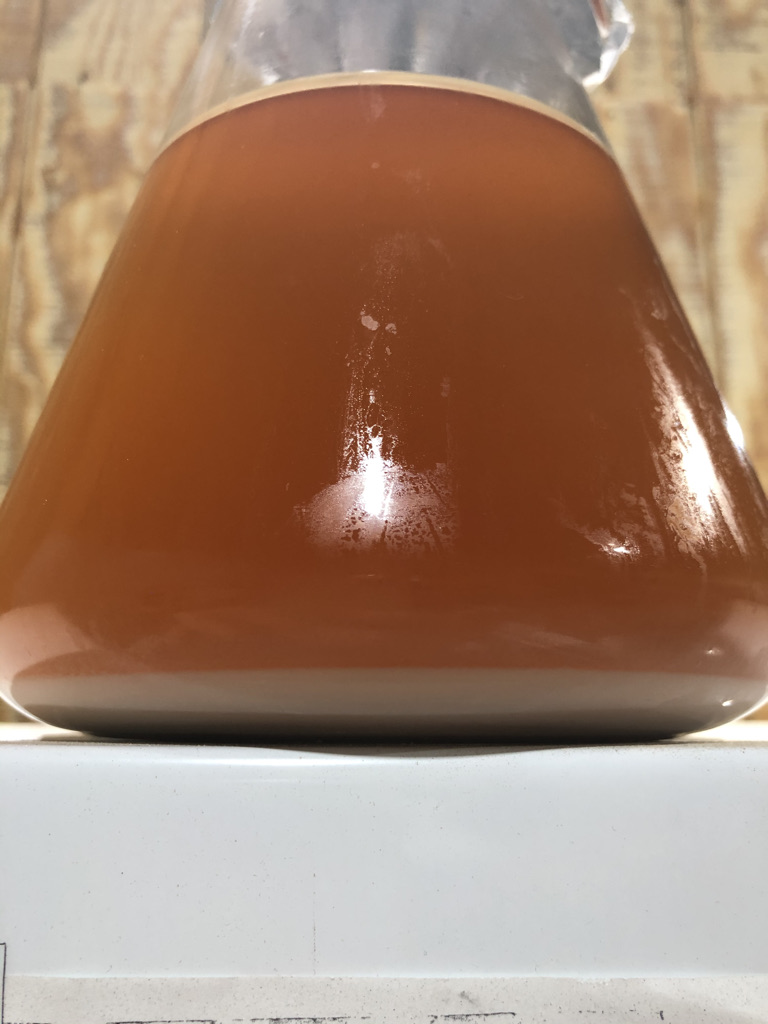I'll start of by saying I've been brewing starters for years, since maybe 2013. I did take a few years away from brewing when we made our move from NJ to FL, but I am back and I'm now preparing for a kolsch brew sometime this week.
I brewed up a starter with 1600ml water and 170 grams dme (light dme from Munton) which should be about 1.036 OG. I am using WLP029 German ale/Kolsch yeast from White Labs, it was purchased less than a month ago from my local HBS. Solid handling of the yeast after purchase (ice pack on the drive home, refrigerator until the day of the starter, starsan for sanitation). I cooled the wort to 68° then pitched and put it up on the stir plate. It's been just shy of 24 hours, the temp of the starter is roughly 80° now but it sure doesn't seem to be any activity other than the stir bar spinning. Anyone ever work with the WLP029, is this what you would expect for activity in a starter? I have to say I've only worked with ale and saison yeasts before, and I've always seen some sort of krausen or foamy activity, this just looks like there's nothing there. I was planning to brew Thursday morning but if this doesn't ferment up and grow some yeast I might have to push it and get another yeast package. FYI, the date on the yeast was sometime in December, which I believe is the expiration date or something like that.
Thoughts?


I brewed up a starter with 1600ml water and 170 grams dme (light dme from Munton) which should be about 1.036 OG. I am using WLP029 German ale/Kolsch yeast from White Labs, it was purchased less than a month ago from my local HBS. Solid handling of the yeast after purchase (ice pack on the drive home, refrigerator until the day of the starter, starsan for sanitation). I cooled the wort to 68° then pitched and put it up on the stir plate. It's been just shy of 24 hours, the temp of the starter is roughly 80° now but it sure doesn't seem to be any activity other than the stir bar spinning. Anyone ever work with the WLP029, is this what you would expect for activity in a starter? I have to say I've only worked with ale and saison yeasts before, and I've always seen some sort of krausen or foamy activity, this just looks like there's nothing there. I was planning to brew Thursday morning but if this doesn't ferment up and grow some yeast I might have to push it and get another yeast package. FYI, the date on the yeast was sometime in December, which I believe is the expiration date or something like that.
Thoughts?









